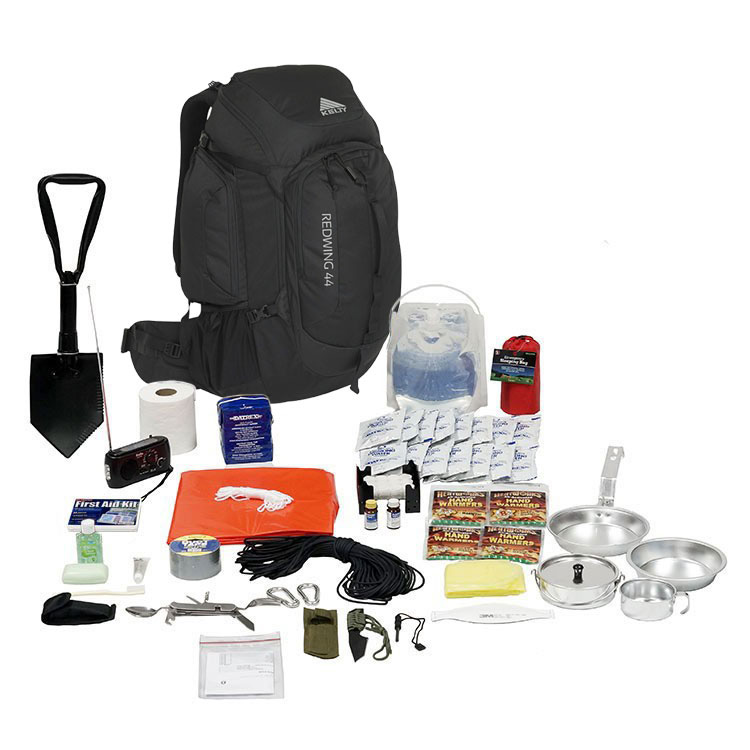Last week, The Ready Store featured an article in The Enterprise, a business journal, on how to prepare your business for an earthquake. Here's what you need to know:
Why Earthquake Preparedness Matters
In February 2008, a 7.5 magnitude earthquake struck near Wells, Nevada. Thankfully, there were no fatalities, but the quake severely damaged half of the town's non-residential buildings. The disaster cost over $9 million and disrupted businesses for months.
If you prepare your family for emergencies, why not your business? Earthquakes can strike at any time, potentially while you're at work. Ensuring your business and employees are ready can prevent costly interruptions and ensure everyone’s safety.
1. Prepare Your Business Location
Assess your office or business location to identify vulnerabilities and develop a preparedness plan.
Identify Potential Hazards
- Secure loose items like hanging pictures and furniture.
- Ensure multiple escape routes exist and are easily accessible.
- Check utilities such as water heaters to ensure they’re properly installed and secured.
Evaluate Your Building
Factors like building design, construction date, and soil conditions can affect how a structure withstands an earthquake:
- Soft, clay-like soil absorbs shock better than rocky ground.
- Ensure fire alarms and extinguishers are in working order.
Stock Emergency Supplies

Keep emergency kits readily available for employees and visitors. Each kit should include:
- Flashlights and batteries
- First-aid supplies
- Collapsible shovels
- Water and snacks
Place kits in accessible locations and ensure employees know where to find them.
2. Prepare Your Employees
Train employees to know what to do before, during, and after an earthquake.
Assign an Emergency Coordinator
Designate an emergency coordinator to lead preparedness efforts, conduct drills, and organize safety training. Incentivize employees to get CPR certified or participate in preparedness workshops.
Teach 'Drop, Cover, and Hold On'
The safest action during an earthquake is to follow the “Drop, Cover, and Hold On” technique:
- Drop to your hands and knees.
- Cover under a sturdy desk or table.
- Hold On until the shaking stops.
While door frames were once recommended, they are not as safe due to falling debris.
Practice Escape Plans
Create and practice an escape plan quarterly. Employees should know their primary and secondary exit routes.
Set a Meeting Location
After the quake stops, employees should gather at a designated meeting location outside the building. The emergency coordinator will take roll and ensure everyone is accounted for.
Plan for Communication
Phone lines are often jammed after disasters. The Federal Communications Commission recommends sending text messages, as they are more likely to go through than phone calls.
3. Prepare for Financial Impact
Many small businesses struggle to recover financially after an earthquake. Take these precautions:
Review Earthquake Insurance
Not all insurance policies cover earthquake damage. Review your policy and consider adding a separate earthquake insurance plan if needed.
Federal Assistance Options
If a federal disaster is declared, businesses can apply for low-interest loans through FEMA or the Small Business Administration (SBA) to cover damages, losses, or working capital needs.
Plan for Emergency Power
Consider investing in backup power solutions, such as generators or solar panels, to keep your business operational during power outages.
Support Your Community
As a business, you have an opportunity to help your local community recover by providing tools, food, water, and other supplies. This builds goodwill and strengthens relationships with customers and neighbors.
Take Action and Be Prepared
By creating a solid earthquake preparedness plan, you can protect your employees, ensure business continuity, and support your community. For additional resources and to participate in preparedness events like the Utah Shake Out on April 17th, visit ussc.utah.gov.












